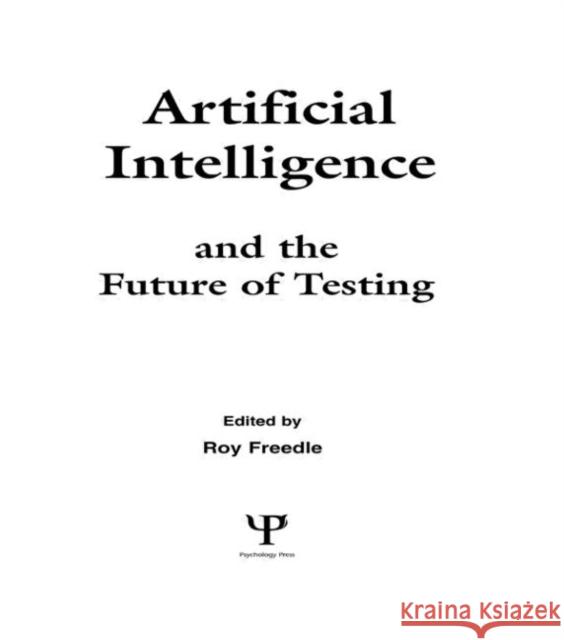Artificial Intelligence and the Future of Testing » książka
Artificial Intelligence and the Future of Testing
ISBN-13: 9780805801170 / Angielski / Twarda / 1990 / 344 str.
Artificial Intelligence and the Future of Testing
ISBN-13: 9780805801170 / Angielski / Twarda / 1990 / 344 str.
(netto: 664,34 VAT: 5%)
Najniższa cena z 30 dni: 654,86 zł
ok. 16-18 dni roboczych.
Darmowa dostawa!
This volume consists of a series of essays written by experts, most of whom participated in a conference conducted by the Educational Testing Service to explore how current fields of artificial intelligence might contribute to ETS's plans to automate one or more of its testing activities. The papers presented in Artificial Intelligence and the Future of Testing touch on a variety of topics including mathematics tutors, graph comprehension and computer vision, student reasoning and human accessing, modeling software design within a general problem-space architecture, memory organization and retrieval, and natural language systems. Also included: speculation on possible uses each AI specialty might have for a wide number of testing activities, and selective critical commentaries by two eminent AI researchers. As Roy Freedle notes in his introduction, We are at an exciting juncture in applying AI to testing activities. The essays presented in this collection convey some of that excitement, and represent an important step toward the merging of AI and testing -- a powerful combination that has the potential to instruct and inspire.
This volume consists of a series of essays written by experts, most of whom participated in a conference conducted by the Educational Testing Service to explore how current fields of artificial intelligence might contribute to ETS's plans to automate one or more of its testing activities.
The papers presented in Artificial Intelligence and the Future of Testing touch on a variety of topics including mathematics tutors, graph comprehension and computer vision, student reasoning and human accessing, modeling software design within a general problem-space architecture, memory organization and retrieval, and natural language systems. Also included: speculation on possible uses each AI specialty might have for a wide number of testing activities, and selective critical commentaries by two eminent AI researchers.
As Roy Freedle notes in his introduction, "We are at an exciting juncture in applying AI to testing activities." The essays presented in this collection convey some of that excitement, and represent an important step toward the merging of AI and testing -- a powerful combination that has the potential to instruct and inspire.











